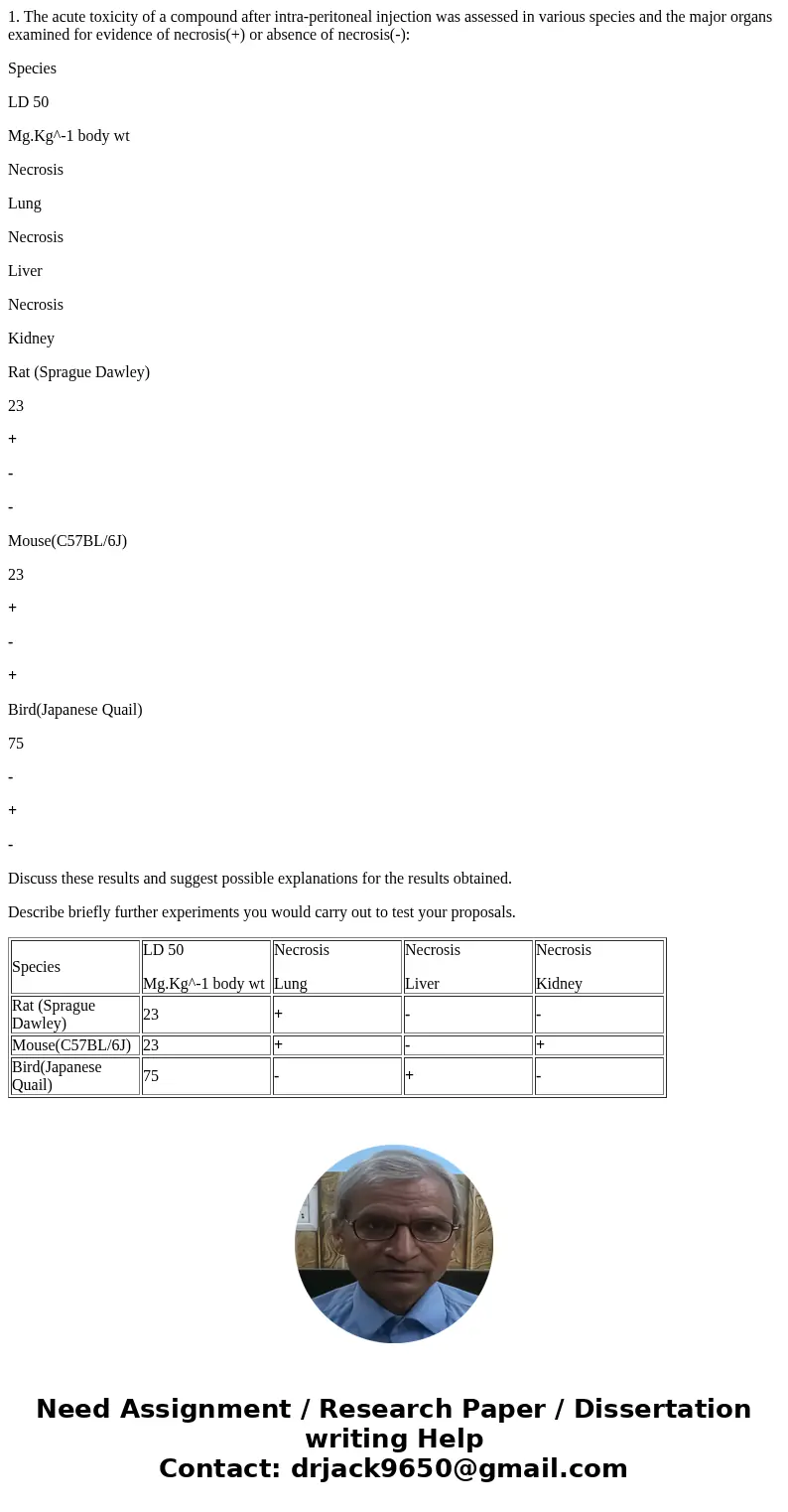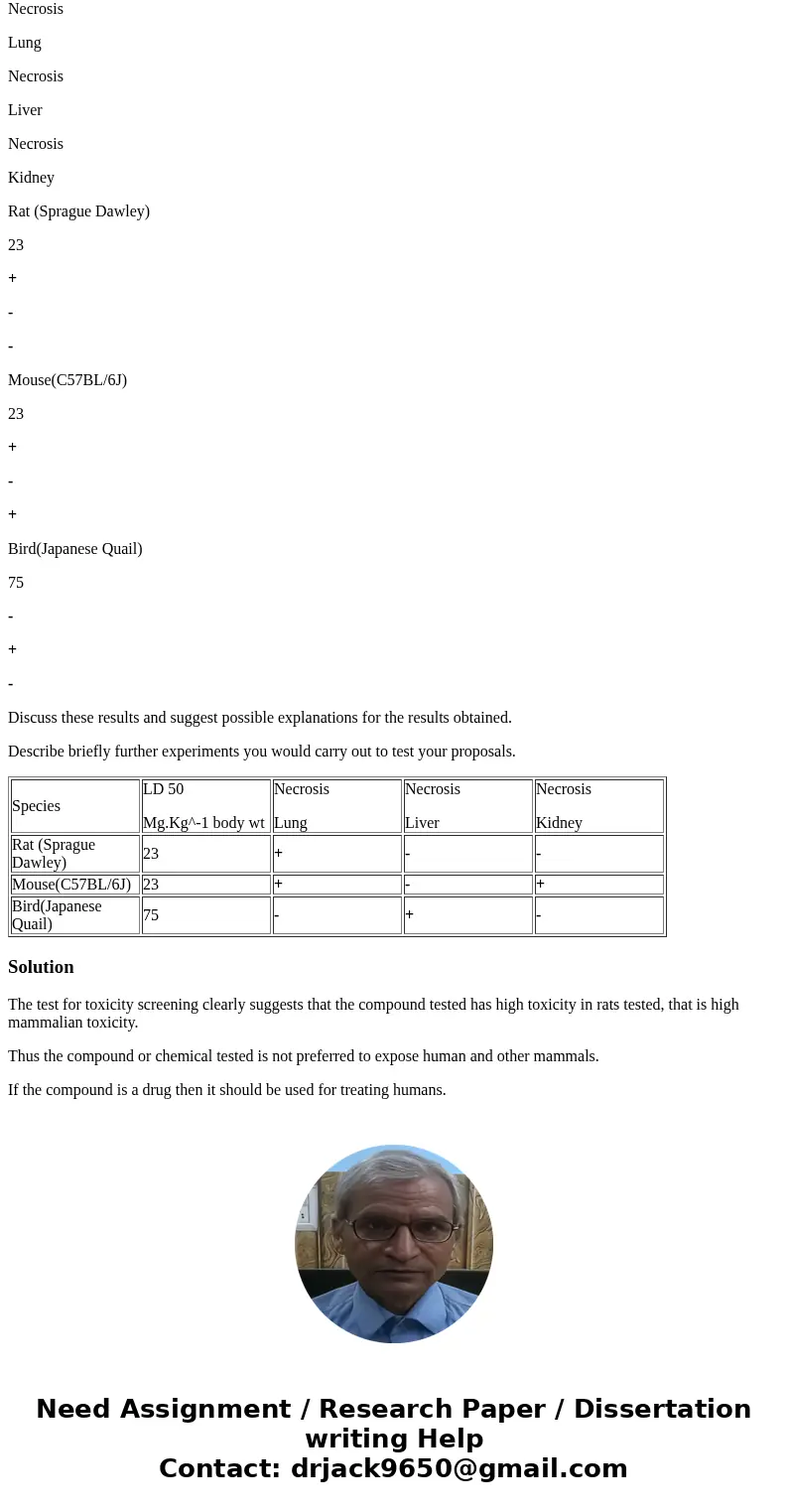1 The acute toxicity of a compound after intraperitoneal inj
1. The acute toxicity of a compound after intra-peritoneal injection was assessed in various species and the major organs examined for evidence of necrosis(+) or absence of necrosis(-):
Species
LD 50
Mg.Kg^-1 body wt
Necrosis
Lung
Necrosis
Liver
Necrosis
Kidney
Rat (Sprague Dawley)
23
+
-
-
Mouse(C57BL/6J)
23
+
-
+
Bird(Japanese Quail)
75
-
+
-
Discuss these results and suggest possible explanations for the results obtained.
Describe briefly further experiments you would carry out to test your proposals.
| Species | LD 50 Mg.Kg^-1 body wt | Necrosis Lung | Necrosis Liver | Necrosis Kidney |
| Rat (Sprague Dawley) | 23 | + | - | - |
| Mouse(C57BL/6J) | 23 | + | - | + |
| Bird(Japanese Quail) | 75 | - | + | - |
Solution
The test for toxicity screening clearly suggests that the compound tested has high toxicity in rats tested, that is high mammalian toxicity.
Thus the compound or chemical tested is not preferred to expose human and other mammals.
If the compound is a drug then it should be used for treating humans.


 Homework Sourse
Homework Sourse